– By Tanya Yadav
The attacks on Kashmir valley by various terrorist organizations has brought into focus the need to find ways to tackle terrorism. Terrorist financing is a complex global problem. This leads to inter-state war and ethnic complexities between nations across the borders. The terrorists are shaking the roots of the world through exploitation of financial resources at the global level.
India has been victim of terrorism for more than 50 years, and the maximum percentage of financing of terrorism emanate from across the borders. The terror attack of 26/11 on Mumbai shook the roots of India. About 166 people died including 20 security force personnel and 26 foreign nationals. 300 people were injured during the attack. This attack was planned and executed in Pakistan. Cash in terrorists’ hands is money that kills. If radical ideology and extremism are at the heart of terrorism today, finance is the life-blood.
Lashkar-e- taiba is a Pakistan based military organization that was formed in 1990. Pakistan’s Inter Services Intelligence (ISI) has been supporting LeT since the early 1990s as a proxy-force to create instability in India. LeT has hawk – eye on Jammu & Kashmir region.But here my concern is from where do these paramilitary groups get funding?
Financing of Terrorism
Recently, Pakistan has dropped grenades, IEDs, pistols, ammunition in J&K, narcotics and weapons are also sent to the region so that sale proceeds of narcotics can be used to fund terrorism. Pakistan did this to destroy peace in Kashmir. Through these activities Pakistan interferes in sovereignty of Kashmir so there is a urge to find sources of terrorist financing and tackle them. Terror funding has been state sponsored, globalised as well as private to an extent. Jammu & Kashmir has seen ‘state sponsored’ terror funds. The Inter-services Intelligence(ISI) employs state as well as the globalized network for raising funds from the Gulf countries. LeT has increased its global reach for fundraising and gaining political support across the globe from North America, Europe, the Gulf and South-East Asia.
ISI has provided covert support to Lashkar-e-Taiba since the mid 1990s. The reasons behind supporting the LeT is that ISI hoped that LeT would not be confined to only the narrow Muslim-dominated valley, it will expand and extend its reach upto the regions populated by Hindus. Besides, ISI also has thehave motive of ethnic-cleansing of Kashmiri Pandits, to increase the presence of Muslims in these regions. Second,ISI recruits share linguistic and ethnic ties with the residents of Rajouri and Poonch in Jammu in Indian-Administered Kashmir,and these LeT activists can easily operate in these areas unlike other militant organizations.
LeT raise their funding through domestic as well as foreign charity solicitations. There are a number of sources of LeT funding. One lucrative source is the collection of hides from the vast number of animals like cows, goats, and camels that millions of Pakistanis slaughter every year during their festival ‘Eid-al-Azha. The people who join the group help in raising funds by collecting the pelts of animals slaughtered during this day. There are three many charitable organizations that are competing for the pelt. The skin of animals is valuable as a single cow hide can fetch up to US$ 50 in Pakistan or about ₹4800.
There are publication wings of the organizations that provide revenue. These publications also encourage readers to donate as well as join the organization. Islamic charities such as al-Harmain Foundation, the al-Rashid Foundation, and the Islamic Relief Organization facilitates donations in large amounts to the organization. But, these charitable organizations usually came under intense scrutiny. There is also one trust- based method for financing i.e. hawala method, in which a person in one city can easily transfer money to another person in a different city. But now this has been declared illegal in Pakistan. It remains the preferred way of transferring remittances even among persons who have no nefarious intentions.
The organization specialized wings are also involved in fund-raising activities like farmer’s wing collects ushr, which is an Islamic land tax that obliges farmers to donate 20% of their harvest or remuneration from that harvest to charity. Some stores and shops also host donation boxes for charity for LeT. Lashkar-e-taiba runs licit businesses and factories in addition to its criminal activities. According to a 2003 report, LeT raised over US$ 10 million through these appeals. This militant organization receives money from Pakistani immigrant communities in Persian Gulf and the United Kingdom, Islamic Non-governmental organizations. According to an estimate, LeT’s annual operating budget is about US$50 million, of which US$5.2 is dedicated to military operations.
Lashkar-e-taiba is the deadliest terrorist organization whose target region is Jammu & Kashmir. According to Stochastic Opponent Modelling Agents (SOMA) there is a possibility that LeT will attack Indian Armed forces when they receive financial support from Pakistan’s diaspora and when they are engaged in businesses in Pakistan. LeT supports proxy Islamist groups inside India with training, weapons, and funding.
Lashkar-e-taiba also has political ambitions. LeT has its political front called Milli Muslim League (MML) created in 2017 by Hafiz Saeed to participate in 2018 Pakistan’s general assembly elections. But it was denied registration as a political party. Pakistan didn’t give LeT recognition as a political party and also banned LeT in 2002. Even though, astonishingly, Pakistan’s government provides overt support to the organization by funding them. This shows the dual character of Pakistan like it is flaunting the world that they have boycotted the organization while on the other hand they are supporting them by raising funds for them.
Money is the driving force of terrorists. A vital aspect of the global “war on terror” over the past decade has been the fight against financing terrorism(Raphel, 2003). Now the question arises why do terrorist organizations collect huge revenue from domestic as well as foreign resource? The terrorists groups often need funds to conduct operations, for equipments and logistics, because it requires resources to make their missions successful. Thus, access to fund transfer channel is essential for feeding terrorist organizations and decisive in their formulation and implementation of their activities. Ayer(2002) argues that, “Terrorists cannot terrorise without money, without resources. The training cost money, planning cost money, and explosives have cost, plane tickets cost money.”That’s why to fulfill their big ambitions these organizations collect revenue through multiple sources.
Sources of Terrorist Funding in J&K
Source Percentage
Direct from Pakistan 25
From narcotics 15
From illegal sale of arms 10
Through counterfeit currency 10
Through Zakat (an Islamic tax) & 10
donations
From international Islamic 20
organisations & Organisation of
Islamic Countries
Through extortion/bank robberies 10
Strategies taken by GoI to combat terror financing
The government of India has adopted vast array of strategies to counter terrorist financing. There has been a substantial decline in the terrorist attacks over the last three years, due to a slew of pre-emptive measures undertaken by the Government. The Mumbai attack on 26 November, 2011 has brought into focus the need to look into ways to tackle terrorist financing. After this incident the Maharashtra Control of Organised Crime Act (1999) was brought into effect. There are also some laws that target illegal practices and financial malpractices such as Foreign Exchange Management Act (1999), Prevention of Money Laundering Act (2002) and The Narcotic Drugs and Psychotropic Substances Act (1985). FEMA has been used twice by investigating agencies such as in April 2018, National Investigation Agency arrested a Jammu-Kashmir based businessman on grounds of suspicion and a notice was issued under FEMA for acting as a passage for terrorist groups. And similarly under FEMA notices were also issued against LeT operative Mohammed Ayub Mir and two Delhi-based hawala dealers. National Investigation Agency (NIA )also conducts raid to check terror funding.
The Unlawful Activities (Prevention) Act was enacted in 1967 and it has been amended in 2004, 2008 and 2012. This Act criminalized the raising of funds for a terrorist act. ISIS and Ansar-ul-ummah are declared as terrorist organizations by including them in first schedule Unlawful Activities (Prevention) Act(UAPA). Night patrolling has also been started and Nakas are set up on infiltration routes to check cross-border vehicles.
A new web enabled software launched to create a National Database of detection of fake Indian Currency notes. Recently, in 2021 Delhi Court issued arrest warrant against Mumbai attack Mastermind Hafiz Saaed in money laundering case related to terror funding. Thus, India is able to tackle terrorist financing to some extent through acts. FATF has put Pakistan on its terrorist financing ” Grey list” since 2018 as it failed to check money laundering and lead to terrorist financing.
It is important to know to what extent terrorist activities have reduced in J&K. Through studies it is found that after abrogation of Article 370 in August 2019 there is decline in terrorists incidents and infiltration of terrorists across the borders. In 2018, 417 terrorist incidents were registered in Jammu and Kashmir, and by 2021 (up to November 30), the incidents had reduced to 203. Now the people of J&K are fearlessly participating in the democratic process. There is also higher neutralization of militants in the Kashmir valley. In September, 2016 the Indian Army launched surgical strikes against terrorist camps in PoK. After surgical strikes there is a reduction in infiltration by 45%. Thus, it can be concluded that there is reduction in terrorists incidents to some extent.
Conclusion
The terror financing is one of the biggest challenge that the democratic countries facing in the present scenario. All the countries need to cooperate with each-other to fight against this global terror. Technology has been proving boon to these terrorist organization as through technological advancement they can communicate easily, make strategies no matter how far they from one another. They manage easily to move large amounts of money without recourse of the formal banking system in order to finance their operations (Schramm & Toube, 2003). Trade based money laundering is also the biggest threat in the near future as such there are many complexities in detection involved in this. This is the innovative means that have been used to exploit the barter trade on the India-Pakistan border.

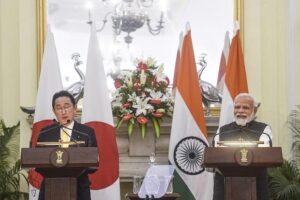


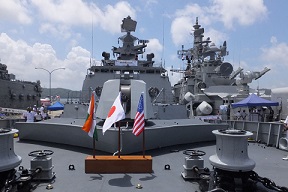
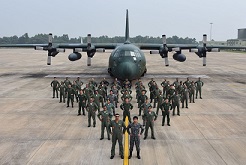



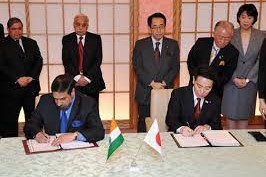

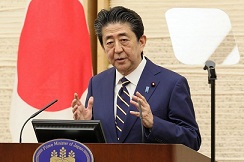
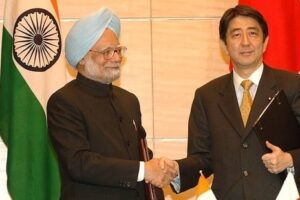
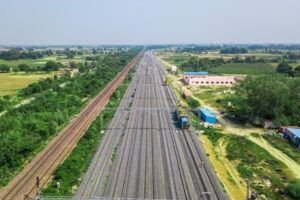
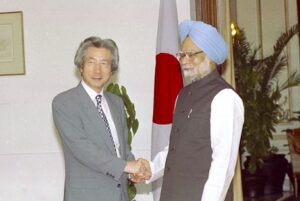
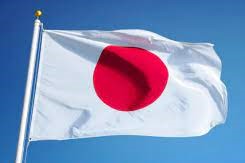
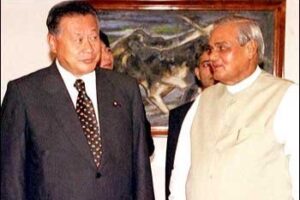
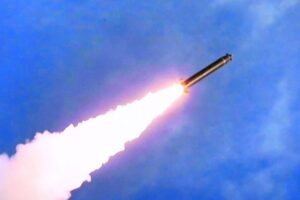
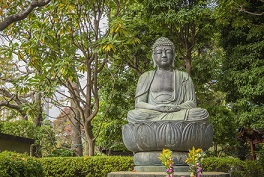



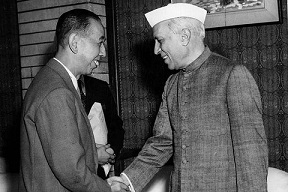



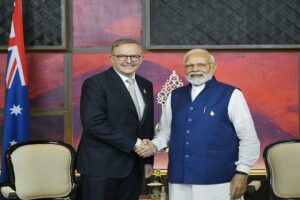




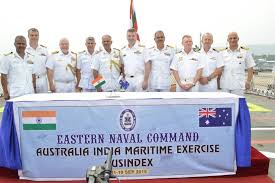

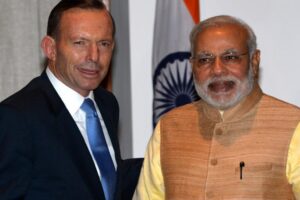
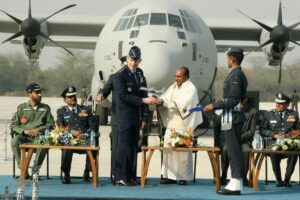




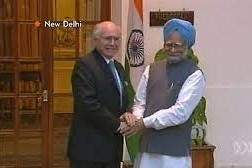
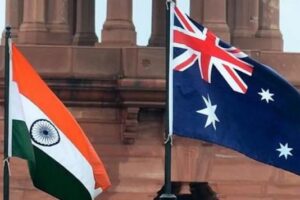
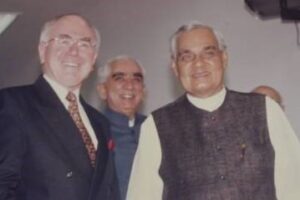
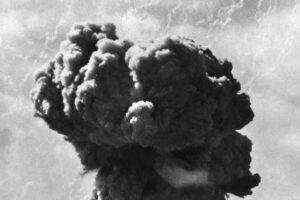
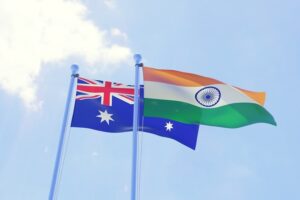

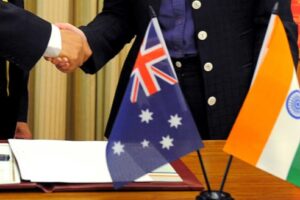


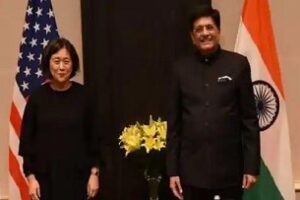
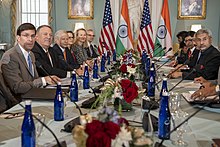

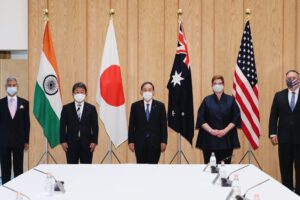

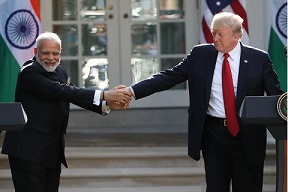
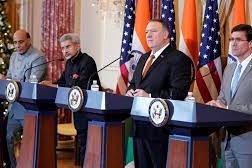
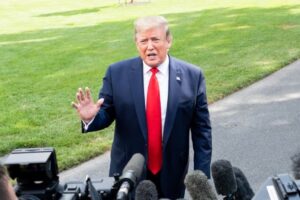
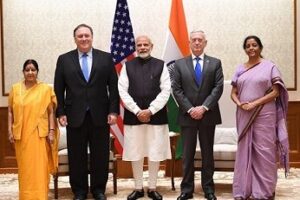
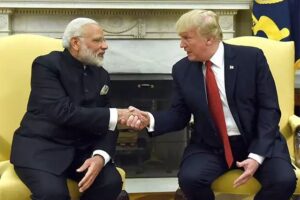
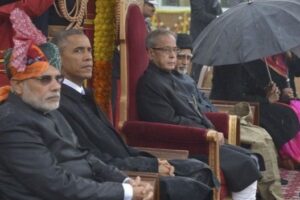

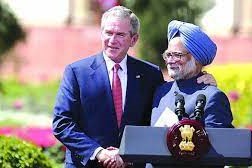
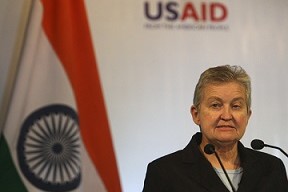
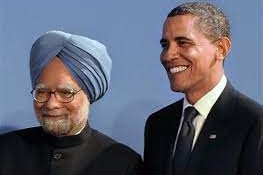
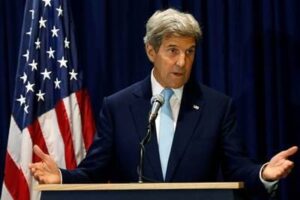

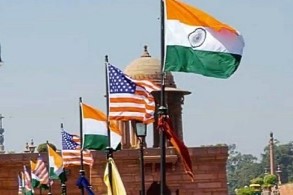
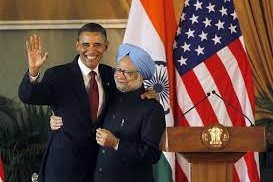
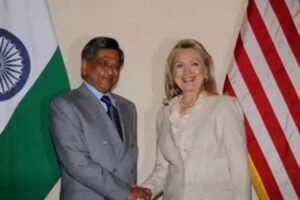
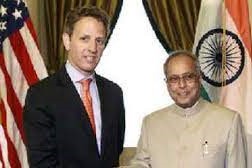
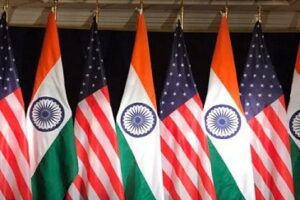
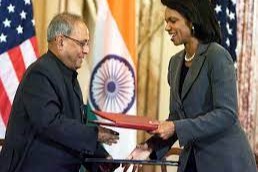

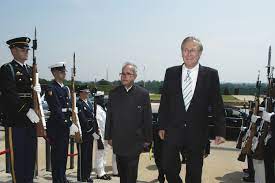
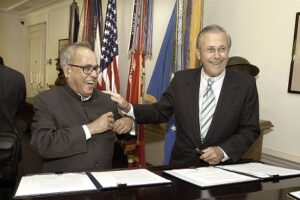

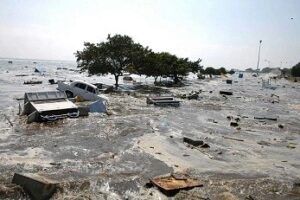
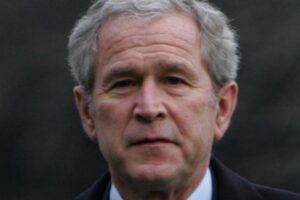
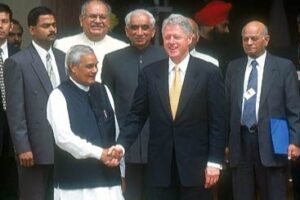
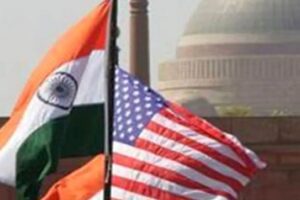
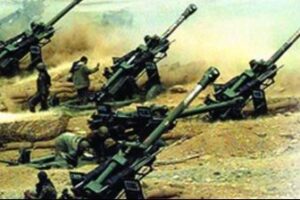
 onducted a total of five underground nuclear tests, breaking a 24-year self-imposed moratorium on nuclear testing. Pakistan followed, claiming 5 tests on May 28, 1998, and an additional test on May 30. The unannounced tests created a global storm of criticism, as well as a serious setback for decades of U.S. nuclear nonproliferation efforts in South Asia. On May 13, 1998, President Clinton imposed economic and military sanctions on India, mandated by Section 102 of the Arms Export Control Act (AECA), and applied the same sanctions to Pakistan on May 30. Some effects of the sanctions on India included: termination of $21 million in FY1998 economic development assistance; postponement of $1.7 billion in lending by the International Financial Institutions (IFI), as supported by the Group of Eight (G-8) leading industrial nations; prohibition on loans or credit from U.S. banks to the government of India; and termination of Foreign Military Sales under the Arms Export Control Act. Humanitarian assistance, food, or other agricultural commodities are excepted from sanctions under the law.
onducted a total of five underground nuclear tests, breaking a 24-year self-imposed moratorium on nuclear testing. Pakistan followed, claiming 5 tests on May 28, 1998, and an additional test on May 30. The unannounced tests created a global storm of criticism, as well as a serious setback for decades of U.S. nuclear nonproliferation efforts in South Asia. On May 13, 1998, President Clinton imposed economic and military sanctions on India, mandated by Section 102 of the Arms Export Control Act (AECA), and applied the same sanctions to Pakistan on May 30. Some effects of the sanctions on India included: termination of $21 million in FY1998 economic development assistance; postponement of $1.7 billion in lending by the International Financial Institutions (IFI), as supported by the Group of Eight (G-8) leading industrial nations; prohibition on loans or credit from U.S. banks to the government of India; and termination of Foreign Military Sales under the Arms Export Control Act. Humanitarian assistance, food, or other agricultural commodities are excepted from sanctions under the law. 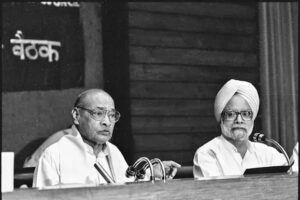
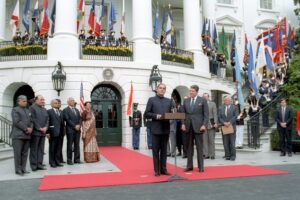

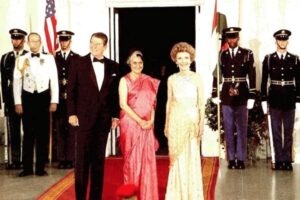
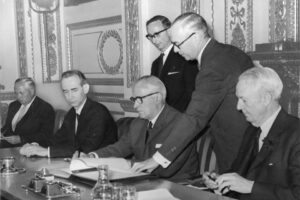
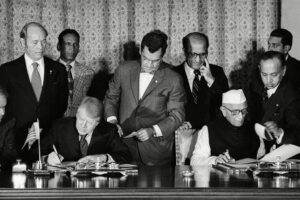
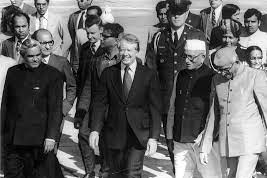
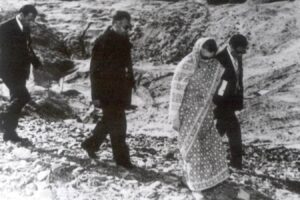
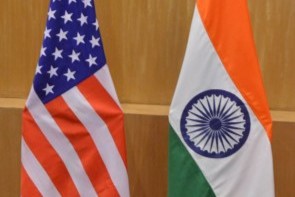

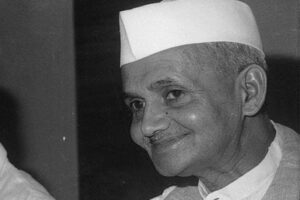
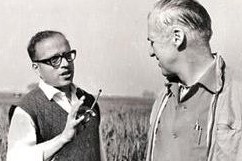
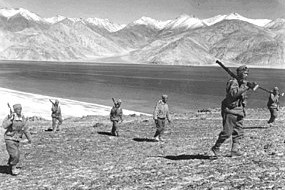
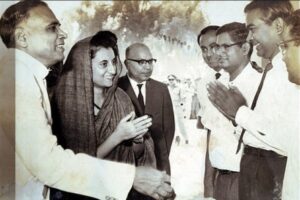
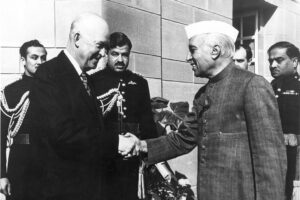

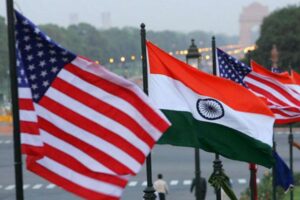
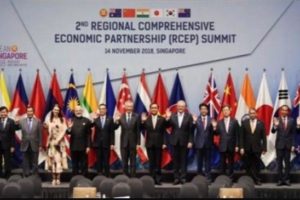 The first ministerial level meeting of QUAD was held on the sidelines of the United Nations General Assembly in New York. Before this, the QUAD had
The first ministerial level meeting of QUAD was held on the sidelines of the United Nations General Assembly in New York. Before this, the QUAD had AusIndEx is an exercise between India and Australia which was first held in 2015.The Australian
AusIndEx is an exercise between India and Australia which was first held in 2015.The Australian 



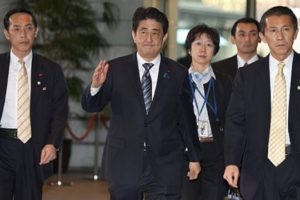
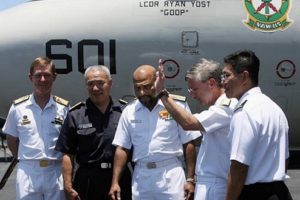
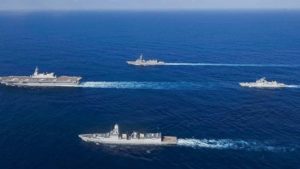

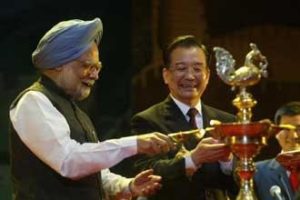 On recommendations of the Japanese government, the four countries met at Manila, Philippines for ASEAN Regional Forum (ARF) originally, but also ended up having a meeting of what we call the first meeting of four nation states on issues of
On recommendations of the Japanese government, the four countries met at Manila, Philippines for ASEAN Regional Forum (ARF) originally, but also ended up having a meeting of what we call the first meeting of four nation states on issues of 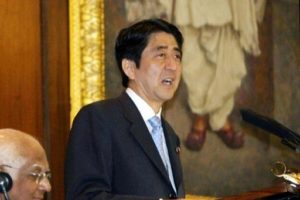 On his official visit to India, Japanese PM Mr. Shinzo Abe reinforced the ties of two nations, i.e., Japan and India with his famous speech about
On his official visit to India, Japanese PM Mr. Shinzo Abe reinforced the ties of two nations, i.e., Japan and India with his famous speech about  In 2007, Japanese President Shinzo Abe resigned from his post citing health reasons. This had a significant impact on QUAD as he was the architect & advocate of QUAD. His successor, Yasuo Fukuda, did not take up QUAD with such zeal leading to dormancy of the forum. (
In 2007, Japanese President Shinzo Abe resigned from his post citing health reasons. This had a significant impact on QUAD as he was the architect & advocate of QUAD. His successor, Yasuo Fukuda, did not take up QUAD with such zeal leading to dormancy of the forum. (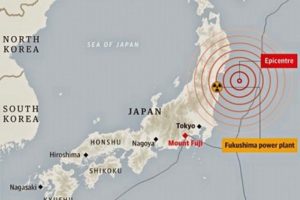 Japan earthquake and tsunami of 2011, also called Great Sendai Earthquake or Great Tōhoku Earthquake, was a 9.0 magnitude earthquake which struck below the floor of the Western Pacific at 2:49 PM. The powerful earthquake affected the northeastern coast of Honshu, Japan’s main island, and also initiated a series of large tsunami waves that devastated coastal areas of Japan, which also led to a major nuclear accident. Japan received aid from India, US, Australia as well as other countries. US Navy aircraft carrier was dispatched to the area and Australia sent search-and-rescue teams.
Japan earthquake and tsunami of 2011, also called Great Sendai Earthquake or Great Tōhoku Earthquake, was a 9.0 magnitude earthquake which struck below the floor of the Western Pacific at 2:49 PM. The powerful earthquake affected the northeastern coast of Honshu, Japan’s main island, and also initiated a series of large tsunami waves that devastated coastal areas of Japan, which also led to a major nuclear accident. Japan received aid from India, US, Australia as well as other countries. US Navy aircraft carrier was dispatched to the area and Australia sent search-and-rescue teams. 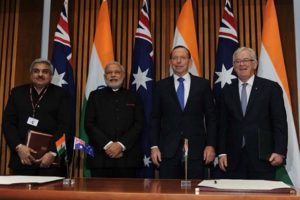 India and Australia signed the
India and Australia signed the  The India-Japan Agreement for Cooperation in the Peaceful Uses of Nuclear Energy was signed on 11 November, 2016 and came into force on 20 July, 2017 which was representative of strengthening ties between India and Japan. Diplomatic notes were exchanged between Dr. S. Jaishankar and H.E. Mr. Kenji Hiramatsu, Ambassador of Japan to India. (
The India-Japan Agreement for Cooperation in the Peaceful Uses of Nuclear Energy was signed on 11 November, 2016 and came into force on 20 July, 2017 which was representative of strengthening ties between India and Japan. Diplomatic notes were exchanged between Dr. S. Jaishankar and H.E. Mr. Kenji Hiramatsu, Ambassador of Japan to India. (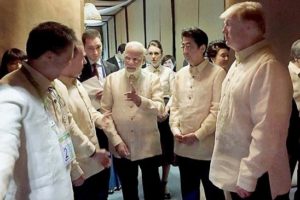 The foreign ministry
The foreign ministry The Officials of QUAD member countries met in Singapore on November 15, 2018 for consultation on regional & global issues of common interest. The main discussion revolved around connectivity, sustainable development, counter-terrorism, maritime and cyber security, with the view to promote peace, stability and prosperity in the
The Officials of QUAD member countries met in Singapore on November 15, 2018 for consultation on regional & global issues of common interest. The main discussion revolved around connectivity, sustainable development, counter-terrorism, maritime and cyber security, with the view to promote peace, stability and prosperity in the  The 23rd edition of trilateral Malabar maritime exercise between India, US and Japan took place on 26 September- 04 October, 2019 off the coast of Japan.
The 23rd edition of trilateral Malabar maritime exercise between India, US and Japan took place on 26 September- 04 October, 2019 off the coast of Japan.  After the first ministerial level meeting of QUAD in September, 2019, the senior officials of US, Japan, India and Australia again met for consultations in Bangkok on the margins of the East Asia Summit. Statements were issued separately by the four countries. Indian Ministry of External Affairs said “In statements issued separately by the four countries, MEA said, “proceeding from the strategic guidance of their Ministers, who met in New York City on the sidelines of the UN General Assembly recently, the officials exchanged views on ongoing and additional practical cooperation in the areas of connectivity and infrastructure development, and security matters, including counterterrorism, cyber and maritime security, with a view to promoting peace, security, stability, prosperity in the Indo-Pacific region.”
After the first ministerial level meeting of QUAD in September, 2019, the senior officials of US, Japan, India and Australia again met for consultations in Bangkok on the margins of the East Asia Summit. Statements were issued separately by the four countries. Indian Ministry of External Affairs said “In statements issued separately by the four countries, MEA said, “proceeding from the strategic guidance of their Ministers, who met in New York City on the sidelines of the UN General Assembly recently, the officials exchanged views on ongoing and additional practical cooperation in the areas of connectivity and infrastructure development, and security matters, including counterterrorism, cyber and maritime security, with a view to promoting peace, security, stability, prosperity in the Indo-Pacific region.” US 2+2 Ministerial Dialogue was held on 18 December, 2019, in Washington DC. Secretary of State Michael R. Pompeo and Secretary of Defense Mark T. Esper will host Indian Minister of External Affairs Dr. S. Jaishankar and Minister of Defense Shri Rajnath Singh. The discussion focussed on deepening bilateral strategic and defense cooperation, exchanging perspectives on global developments, and our shared leadership in the Indo-Pacific region.The two democracies signed the Industrial Security Annex before the 2+2 Dialogue. Assessments of the situation in Afghanistan, Pakistan, Nepal, Sri Lanka, and the Indian Ocean region in general were shared between both countries. (
US 2+2 Ministerial Dialogue was held on 18 December, 2019, in Washington DC. Secretary of State Michael R. Pompeo and Secretary of Defense Mark T. Esper will host Indian Minister of External Affairs Dr. S. Jaishankar and Minister of Defense Shri Rajnath Singh. The discussion focussed on deepening bilateral strategic and defense cooperation, exchanging perspectives on global developments, and our shared leadership in the Indo-Pacific region.The two democracies signed the Industrial Security Annex before the 2+2 Dialogue. Assessments of the situation in Afghanistan, Pakistan, Nepal, Sri Lanka, and the Indian Ocean region in general were shared between both countries. (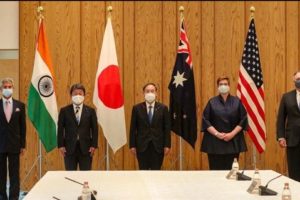 The foreign ministers of QUAD continued their discussions from the last ministerial level meeting in 2019, on 6 October, 2020. While there was no joint statement released, all countries issued individual readouts. As per the issue readout by India, the discussion called for a coordinated response to the challenges including financial problems emanating from the pandemic, best practices to combat Covid-19, increasing the resilience of supply chains, and enhancing access to affordable vaccines, medicines and medical equipment. There was also a focus on maintaining stability in the Indo-Pacific region amidst growing tensions. Australian media release mentions “We emphasised that, especially during a pandemic, it was vital that states work to ease tensions and avoid exacerbating long-standing disputes, work to counter disinformation, and refrain from malicious cyberspace activity. Ministers reiterated that states cannot assert maritime claims that are inconsistent with international law, particularly the United Nations Convention on the Law of the Sea (UNCLOS).”
The foreign ministers of QUAD continued their discussions from the last ministerial level meeting in 2019, on 6 October, 2020. While there was no joint statement released, all countries issued individual readouts. As per the issue readout by India, the discussion called for a coordinated response to the challenges including financial problems emanating from the pandemic, best practices to combat Covid-19, increasing the resilience of supply chains, and enhancing access to affordable vaccines, medicines and medical equipment. There was also a focus on maintaining stability in the Indo-Pacific region amidst growing tensions. Australian media release mentions “We emphasised that, especially during a pandemic, it was vital that states work to ease tensions and avoid exacerbating long-standing disputes, work to counter disinformation, and refrain from malicious cyberspace activity. Ministers reiterated that states cannot assert maritime claims that are inconsistent with international law, particularly the United Nations Convention on the Law of the Sea (UNCLOS).”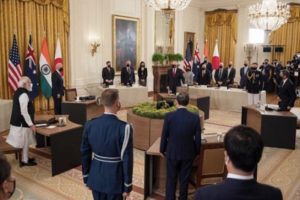 On September 24, President Biden hosted Prime Minister Scott Morrison of Australia, Prime Minister Narendra Modi of India, and Prime Minister Yoshihide Suga of Japan at the White House for the first-ever in-person Leaders’ Summit of the QUAD. The leaders released a Joint Statement which summarised their dialogue and future course of action. The regional security of the Indo-Pacific and strong confidence in the ASEAN remained on the focus along with response to the Pandemic.
On September 24, President Biden hosted Prime Minister Scott Morrison of Australia, Prime Minister Narendra Modi of India, and Prime Minister Yoshihide Suga of Japan at the White House for the first-ever in-person Leaders’ Summit of the QUAD. The leaders released a Joint Statement which summarised their dialogue and future course of action. The regional security of the Indo-Pacific and strong confidence in the ASEAN remained on the focus along with response to the Pandemic. 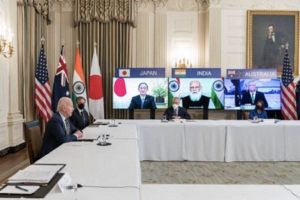 The QUAD Vaccine Partnership was announced at the first QUAD Summit on 12 March 2021 where QUAD countries agreed to deliver 1.2 billion vaccine doses globally. The aim was to expand and finance vaccine manufacturing and equipping the Indo-Pacific to build resilience against Covid-19. The launch of a senior-level QUAD Vaccine Experts Group, comprised of top scientists and officials from all QUAD member governments was also spearheaded.
The QUAD Vaccine Partnership was announced at the first QUAD Summit on 12 March 2021 where QUAD countries agreed to deliver 1.2 billion vaccine doses globally. The aim was to expand and finance vaccine manufacturing and equipping the Indo-Pacific to build resilience against Covid-19. The launch of a senior-level QUAD Vaccine Experts Group, comprised of top scientists and officials from all QUAD member governments was also spearheaded.  Although the Tsunami Core group had to be disbanded on fulfilment of its purpose, however the quadrilateral template that formed remained intact as a successful scaffolding of four countries, as stated by authors Patrick Gerard Buchan and Benjamin Rimland in their diplomatic brief about QUAD ( you can access the brief at
Although the Tsunami Core group had to be disbanded on fulfilment of its purpose, however the quadrilateral template that formed remained intact as a successful scaffolding of four countries, as stated by authors Patrick Gerard Buchan and Benjamin Rimland in their diplomatic brief about QUAD ( you can access the brief at 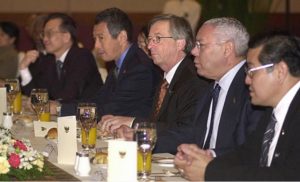 Secretary of State Colin Powell stated that the Core Tsunami Group was to be disbanded and folded and clubbed with the broader United Nations led Relief Operations. In a Tsunami Relief Conference in Jakarta, Secretary Powell stated that
Secretary of State Colin Powell stated that the Core Tsunami Group was to be disbanded and folded and clubbed with the broader United Nations led Relief Operations. In a Tsunami Relief Conference in Jakarta, Secretary Powell stated that 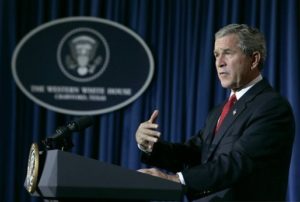 Soon after the Earthquake and Tsunami crisis, humanitarian reliefs by countries, viz., US, India, Japan, and Australia started to help the 13 havoc-stricken countries. The US initially promised $ 35 Millions in aid. However, on 29
Soon after the Earthquake and Tsunami crisis, humanitarian reliefs by countries, viz., US, India, Japan, and Australia started to help the 13 havoc-stricken countries. The US initially promised $ 35 Millions in aid. However, on 29 At 7:59AM local time, an earthquake of 9.1 magnitude (undersea) hit the coast of Sumatra, an Indonesian island. As a result of the same, massive waves of Tsunami triggered by the earthquake wreaked havoc for 7 hours across the Indian Ocean and to the coastal areas as far away as East Africa. The infamous Tsunami killed around 225,000 people, with people reporting the height of waves to be as high as 9 metres, i.e., 30 feet. Indonesia, Srilanka, India, Maldives, Thailand sustained horrendously massive damage, with the death toll exceeding 200,000 in Northern Sumatra’s Ache province alone. A great many people, i.e., around tens of thousands were found dead or missing in Srilanka and India, mostly from Andaman and Nicobar Islands of Indian territory. Maldives, being a low-lying country, also reported casualties in hundreds and more, with several non-Asian tourists reported dead or missing who were vacationing. Lack of food, water, medicines burgeoned the numbers of casualties, with the relief workers finding it difficult to reach the remotest areas where roads were destroyed or civil war raged. Long-term environmental damage ensued too, as both natural and man-made resources got demolished and diminished.
At 7:59AM local time, an earthquake of 9.1 magnitude (undersea) hit the coast of Sumatra, an Indonesian island. As a result of the same, massive waves of Tsunami triggered by the earthquake wreaked havoc for 7 hours across the Indian Ocean and to the coastal areas as far away as East Africa. The infamous Tsunami killed around 225,000 people, with people reporting the height of waves to be as high as 9 metres, i.e., 30 feet. Indonesia, Srilanka, India, Maldives, Thailand sustained horrendously massive damage, with the death toll exceeding 200,000 in Northern Sumatra’s Ache province alone. A great many people, i.e., around tens of thousands were found dead or missing in Srilanka and India, mostly from Andaman and Nicobar Islands of Indian territory. Maldives, being a low-lying country, also reported casualties in hundreds and more, with several non-Asian tourists reported dead or missing who were vacationing. Lack of food, water, medicines burgeoned the numbers of casualties, with the relief workers finding it difficult to reach the remotest areas where roads were destroyed or civil war raged. Long-term environmental damage ensued too, as both natural and man-made resources got demolished and diminished.
No responses yet